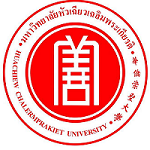Please use this identifier to cite or link to this item:
https://has.hcu.ac.th/jspui/handle/123456789/4057Full metadata record
| DC Field | Value | Language |
|---|---|---|
| dc.contributor.author | Ariya Chindamporn | - |
| dc.contributor.author | Patcharee Kammarnjessadakul | - |
| dc.contributor.author | Sawang Kesdangsakonwut | - |
| dc.contributor.author | Wijit Banlunara | - |
| dc.contributor.author | อริยา จินดามพร | - |
| dc.contributor.author | พัชรี กัมมารเจษฎากุล | - |
| dc.contributor.author | สว่าง เกษแดงสกลวุฒิ | - |
| dc.contributor.author | วิจิตร บรรลุนารา | - |
| dc.contributor.other | Chulalongkorn University. Faculty of Medicine | en |
| dc.contributor.other | Huachiew Chalermprakiet University. Faculty of Medical Technology | en |
| dc.contributor.other | Chulalongkorn University. Faculty of Veterinary Science | en |
| dc.contributor.other | Chulalongkorn University. Faculty of Veterinary Science | en |
| dc.date.accessioned | 2025-06-21T04:57:58Z | - |
| dc.date.available | 2025-06-21T04:57:58Z | - |
| dc.date.issued | 2020 | - |
| dc.identifier.citation | Microbiol 2020 Feb 14;2(4):acmi000109. | en |
| dc.identifier.other | doi: 10.1099/acmi.0.000109 | - |
| dc.identifier.uri | https://has.hcu.ac.th/jspui/handle/123456789/4057 | - |
| dc.description | สามารถเข้าถึงบทความฉบับเต็ม (Full Text) ได้ที่ : https://pubmed.ncbi.nlm.nih.gov/33005872/ | en |
| dc.description.abstract | Introduction: Pythium insidiosum causes pythiosis in humans and animals in tropical and subtropical climates. The clinical manifestations in humans are mostly systemic, vascular or ocular forms, in contrast to animals, which are cutaneous, subcutaneous and gastrointestinal forms. The highest incidence of human cases is reported in Thailand, however, no canine pythiosis has been documented yet. Case presentation: A female, mixed-breed, stray dog showed severe extensive ulcerative haemorrhagic dermatitis at the perineum involving the anus and tail. On cytology, there were sparse branching septate fungal hyphae. The tissue samples were subjected to polymerase chain reaction and gene sequencing for fungal identification. Conclusion: The results of the internal transcribed spacer 1 and 2 (ITS1 and ITS2) gene had 99 % homology to Pythium insidiosum (accession no. FJ17396) and the COX2 gene (accession no. GQ451572). The phylogenetic tree of both genes was classified in clade ATH. This is the first fully documented diagnosis of canine cutaneous pythiosis in Thailand. | en |
| dc.language.iso | en_US | en |
| dc.subject | Pythium insidiosum pythiosis | en |
| dc.subject | พิเทียมอินสิดิโอซัม พิธิโอซิส | en |
| dc.subject | สุนัข | en |
| dc.subject | Dogs | en |
| dc.subject | Canines | en |
| dc.subject | Skin | en |
| dc.subject | ผิวหนัง | en |
| dc.subject | การวิเคราะห์สิ่งมีชีวิตตามลักษณะทางพันธุกรรม | en |
| dc.subject | Phylogenetic analysis | en |
| dc.title | A case of canine cutaneous pythiosis in Thailand | en |
| dc.type | Article | en |
| Appears in Collections: | Medical Technology - Articles Journals | |
Files in This Item:
| File | Description | Size | Format | |
|---|---|---|---|---|
| A-case-of-canine-cutaneous-pythiosis-in-Thailand.pdf | 59.66 kB | Adobe PDF | View/Open |
Items in DSpace are protected by copyright, with all rights reserved, unless otherwise indicated.
